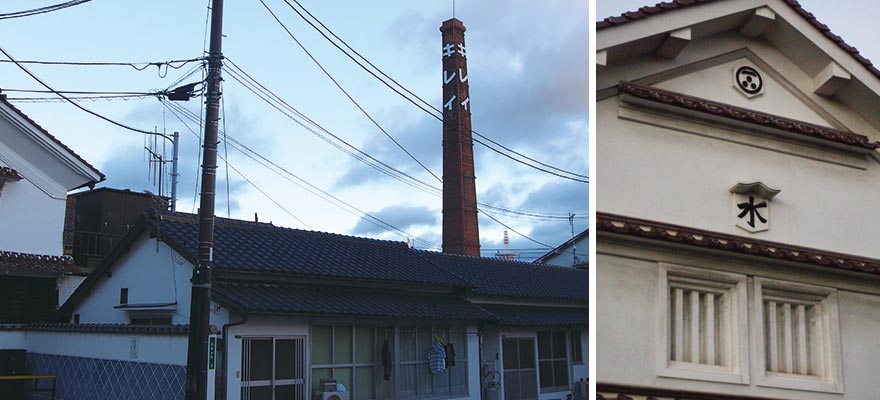Home > Highlighting JAPAN >Highlighting Japan February 2014>Living with water
Highlighting JAPAN
Living with water
The National Research Institute of Brewing
Cementing the relationship between pure water and sake

In Japan, there's a saying that goes, "Wherever there is fine water, there is fine sake." And near any Japanese wellspring or groundwater reservoir known for its clear water, it's a virtual certainty you'll find a sake brewery. The future of sake production is tied to the preservation of this sparkling natural resource.
While sake is often referred to in English as 'rice wine,' this isn't truly accurate. Wine is made through the fermentation of sugar from grapes, while beer is made through the saccharification of the starch and enzymes in malt, producing sugar that's then fermented. Similarly, to produce sake, rice undergoes saccharification and alcohol fermentation at the same time. Hence, sake is described as being brewed. Rather than being aged like wine, most sake is best drunk young, within a few months of purchase, just like beer.
Japan's Jozo Shikenjo, or 'Institute of Brewing,' was established in Tokyo in 1904 as a national research organization for technology related to alcoholic beverages, aiming to improve traditional brewing techniques through scientific research. Since renamed the National Research Institute of Brewing, and moved from Tokyo to the town of Saijo in Higashihiroshima City in 1995, the institute still carries out advanced analysis, evaluation and research of alcoholic beverages. The institute aims to support the sound development of Japan's alcoholic beverages industry as well as the suitable and fair imposition of liquor taxes. It shares its research results with professionals and consumers through lectures, publications and web sites while also hosting contests to evaluate the quality of alcoholic beverages.
With no less than nine sake breweries packed into a small area, the town of Saijo would seem a natural choice for a sake research institute. "The tradition of sake production in Hiroshima dates back to when Senzaburo Miura developed a process for brewing sake with the soft water of this region," explains Dr. Masaki Okuda of the National Research Institute of Brewing. "He determined early on that the processes of brewing with soft and hard water were vastly different, and he taught the techniques he developed to the brewing community here."
Freshwater mineral content varies from region to region, and water of low mineral content is referred to as 'soft water' or nansui in Japanese. In Saijo, the water is famous for its softness. "It used to be that it was more difficult to make sake with nansui," Okuda explains. "But the result is a very smooth sake with a gentle aftertaste." Soft water sake is called onna-zake, or 'woman sake,' which requires slow fermentation over low temperatures to produce. Sake made from water with high mineral content, or hard water, is often called otoko-zake ('man sake'), which Okuda says is because the microorganisms in water become highly active in the high-mineral environment, giving it a harsh edge.
The mineral content of the water used in brewing must be carefully balanced. For example, although a small amount of iron is needed for microorganisms to thrive, too much iron will change the color of the sake and affect its aroma. Thus, the iron content in water used for sake must be precisely controlled at a standard of less than 0.02 parts per million. Other important minerals include magnesium and phosphorus, which help to propagate the sake yeast, and koji fungus that are essential to the brewing process.
In Saijo, the water best suited to sake brewing bubbles up from under a single narrow street called Sakagura-dori, or 'Sake Brewing Street,' around which all of the town's breweries are concentrated. These breweries can be easily identified by their tall brick chimneys. Tatsuto Unezaki, secretary of communications for the Saijo Environmental Association for Preserving Mountains and Water, enjoys taking in the historic architecture as he walks up the lanes, tasting samples of the groundwater here and there. "The rainwater that falls on Mount Ryuo travels through the earth for 50 years before it reaches the brewers on this street," he says. "We've been careful to maintain Mount Ryuo in order to protect this water. These sake breweries are no more than 300 meters from that mountain, all side-by-side in this small area, all specializing in their own unique sake. I find it fascinating that the source of their water, Mount Ryuo, is right within walking distance. From a small rise of land, you can see the mountain that provides their water, the shrine dedicated to a god of sake brewing and the red brick chimneys of the breweries. You can observe the process of sake-making unfold just by standing here."
You certainly can – and you can almost taste the aroma.
© 2009 Cabinet Office, Government of Japan






